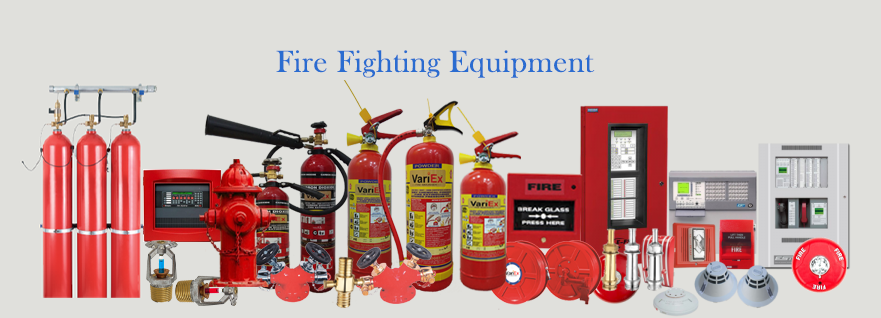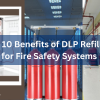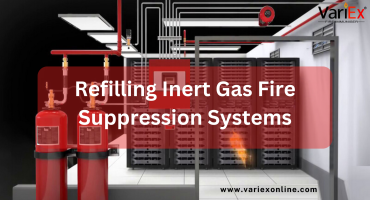![]()
Fire Immuniser
+91-7829629111
Email: info@variex.in
Varistor Technologies Pvt. Ltd.
Block-1, First Floor, Ardente Office One, Hoodi Circle, ITPL Main Road, Bengaluru, Karnataka 560048, IN
Fire Fighting Appliances
Fire fighting appliances are essential tools and equipment designed to combat fires effectively and safeguard lives and property. From portable extinguishers to sophisticated suppression systems, these appliances play a crucial role in mitigating the impact of fires. In this comprehensive guide, we will explore the various types of fire fighting appliances, their uses, and their importance in fire safety measures.
1. Portable Fire Extinguishers: Portable fire extinguishers are versatile devices used to extinguish small fires before they escalate. They come in various types, including:
- Water extinguishers: Suitable for Class A fires involving ordinary combustibles such as wood and paper.
- Dry chemical extinguishers: Effective for Class A, B, and C fires involving flammable liquids and gases.
- CO2 extinguishers: Ideal for electrical fires and Class B fires involving flammable liquids.
- Foam extinguishers: Effective for Class A and B fires, forming a blanket over the fire to smother it.
2. Fire Hose Reels: Fire hose reels are stationary devices equipped with hoses and nozzles for delivering water to suppress fires. They are commonly installed in buildings and industrial facilities and provide a readily accessible water supply for fire fighting efforts.
3. Fire Hydrants: Fire hydrants are outdoor fixtures connected to the municipal water supply, providing a large volume of water for fire fighting operations. They are strategically located along streets and in commercial and residential areas to ensure easy access for firefighters.
4. Sprinkler Systems: Sprinkler systems are automatic fire suppression systems that detect and extinguish fires using water or other suppression agents. They consist of sprinkler heads connected to a network of pipes and are activated by heat, releasing water to suppress the fire.
5. Fire Blankets: Fire blankets are non-flammable sheets made of materials such as fiberglass or wool, used to smother small fires or wrap around a person to protect them from flames. They are commonly found in kitchens, laboratories, and industrial settings.
6. Fire Alarm Systems: Fire alarm systems detect the presence of smoke or heat and alert building occupants to evacuate in the event of a fire emergency. They may include smoke detectors, heat detectors, strobe lights, and audible alarms to provide timely warnings.
7. Carbon Monoxide Detectors: Carbon monoxide detectors are devices that monitor the presence of carbon monoxide, a colorless, odorless gas produced by incomplete combustion. They provide early warning of potentially deadly carbon monoxide leaks, allowing occupants to evacuate safely.
Conclusion
Fire fighting appliances are essential components of fire safety measures, providing the tools and equipment necessary to suppress fires effectively and protect lives and property. By understanding the types and uses of fire fighting appliances, individuals and organizations can implement comprehensive fire safety strategies to minimize the risk of fires and ensure a prompt and effective response in the event of an emergency.
Frequently Asked Questions
What are fire fighting appliances?
Fire fighting appliances are tools, equipment, and systems designed to detect, suppress, and mitigate the effects of fires. They include portable extinguishers, hose reels, hydrants, sprinkler systems, fire blankets, alarm systems, and carbon monoxide detectors.
What is the purpose of fire fighting appliances?
The primary purpose of fire fighting appliances is to prevent fires from spreading, suppress fires that occur, and protect lives and property from fire damage. They play a crucial role in fire safety measures and emergency response efforts.
What types of fires can fire fighting appliances be used to extinguish?
Fire fighting appliances are designed to extinguish different classes of fires, including Class A (ordinary combustibles such as wood and paper), Class B (flammable liquids and gases), Class C (electrical fires), and Class K (kitchen fires involving cooking oils and fats).
How should fire fighting appliances be maintained?
Fire fighting appliances should be inspected, tested, and maintained regularly to ensure they are in proper working condition. This includes checking for damage, verifying pressure levels, and replacing expired extinguishing agents. Maintenance should be performed by qualified professionals according to manufacturer guidelines and regulatory requirements.
Where are fire fighting appliances commonly installed?
Fire fighting appliances are commonly installed in various locations, including commercial buildings, industrial facilities, residential homes, vehicles, and outdoor public spaces. They are strategically positioned to provide easy access in the event of a fire emergency.
Are there regulations governing the installation and use of fire fighting appliances?
Yes, there are regulations and standards governing the installation, maintenance, and use of fire fighting appliances. These regulations may vary depending on the jurisdiction and the type of building or facility. Compliance with these regulations is essential to ensure the effectiveness and reliability of fire safety measures.
What should I do in the event of a fire emergency?
In the event of a fire emergency, follow your organization's or building's emergency procedures. This may include activating fire alarm systems, evacuating the building using designated escape routes, and using fire fighting appliances if safe to do so. If in doubt, evacuate immediately and call emergency services.
Final Say
We at VariEx.in or Variexonline.com have mastered the art of designing, installing, inspecting, and fixing automatic sprinkler systems with the help of our in-house team, which is capable of delivering the fire sprinkler services you need, whether large or small and at affordable cost.
To schedule a fire sprinkler installation, or you think our services could benefit your commercial property, contact us online or give us a call at, 7829629111









